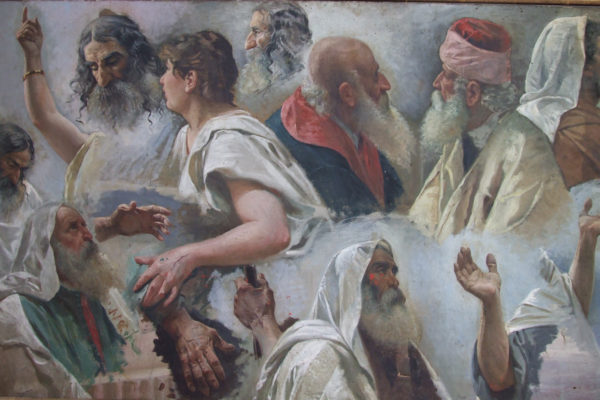Pietro Aldi
Manciano, 12 July 1852 – 18 May 1888
Born into a family of wealthy landowners, Pietro Aldi in 1864 enrolled in the Istituto di Belle Arti in Siena, directed by Luigi Mussini. He won the triennial competition in 1873 and the following year, with The Defeat of Conrad of Swabia at Tagliacozzo, won a Biringucci fellowship from the Società di Esecutori di Pie Disposizioni in Siena which enabled him to study in Venice, Florence, and Rome, where he worked with Cesare Maccari. In 1876 he sent The Adulteress to Siena as an example of his studies, but in early 1877 he was forced to return to Manciano because of ill health, a problem that unfortunately would become frequent.
In 1878 he presented in Rome Buoso da Dovara, which was a great success. In 1880 he painted The Virgin and Child Appearing to St. Paul of the Cross for the convent of the Passionist Fathers on Mount Argentario. That same year, he did The Funeral of Pompey the Great, shown in Turin in 1881, and in 1883 participated in the international show in Rome with The Final Hours of Sienese Liberty, to critical acclaim; that same year, he frescoed two funerary chapels in the Misericordia Cemetery in Siena: The Intercessory Angels in the Pollini chapel and Charity in the Franci chapel. The following year he painted St. Joseph with the Christ Child for the church of San Nicola in Sorano and finished two large pictures for Pitigliano cathedral with important moments from the life of Pope Gregory VII.
In 1886, in the Risorgimento Room of the Palazzo Pubblico in Siena, he painted The Meeting at Vignale and the very famous Meeting at Teano. Two years later he presented a large-scale painting of The Triumph of Judith now in the Vatican Museum. At the same time he began work on the canvas of Nero Watching Rome Burn, intended to be shown at the 1889 International Exposition in Paris, but it remained unfinished at his death.
![]() Deutsch
Deutsch


